Introduction
Since Routino can calculate routes for all types of transport the database needs to contain information about the highways available to all transport types which increases the size. The increased size and larger number of junctions will also slow down the routing.A database that is created for just motor vehicles (for example) will still calculate exactly the same route for motor vehicles but allow it to be done quicker. The default Routino distribution will generate a tagging configuration file called tagging-drive.xml that it targetted to motor vehicles and this has been used for these tests.
The tests were performed with Routino version 3.1 using the same method as described in the standard benchmarks.
Database Generation
Time and Memory
The results for time and memory are presented below as a table and a pair of graphs. The test was performed with the normal tagging rules (labelled as "all" below) as well as the "drive", "ride" and "walk" tagging rule sets).
| Version | CPU Time (s) | Elapsed Time (s) | Max Resident Set Size (MB) |
|---|---|---|---|
| drive | 180.85 | 217.48 | 488 |
| ride | 195.84 | 239.12 | 487 |
| walk | 230.82 | 279.79 | 562 |
| all | 219.13 | 270.09 | 583 |
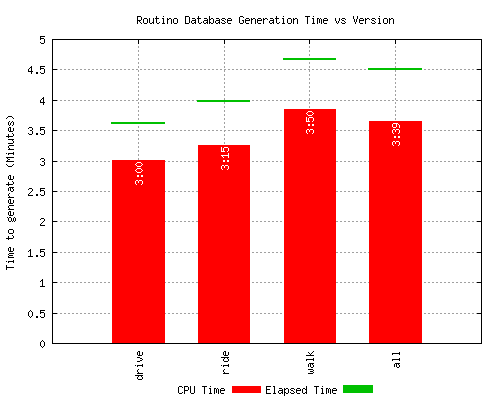
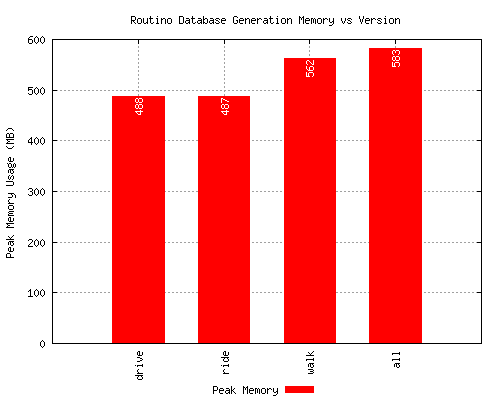
As expected the database for driving is generated in less time (about 75% of the time for the complete database) and using less memory (also about 75%). The other two options come in between.
Database Size and Contents
There will also be a large difference in the database size and contents for the different options.
| Version | Nodes (k) | Super- Nodes (k) | Segments (k) | Super- Segments (k) | Ways (k) | Relations (k) |
|---|---|---|---|---|---|---|
| drive | 5450.4 | 894.1 | 6605.6 | 1350.5 | 424.7 | 2.1 |
| ride | 6080.8 | 1028.0 | 7402.6 | 1549.3 | 445.9 | 2.1 |
| walk | 7114.6 | 1481.8 | 8871.8 | 2196.2 | 435.6 | 0.0 |
| all | 7428.4 | 1693.4 | 9356.2 | 2473.9 | 498.0 | 2.1 |
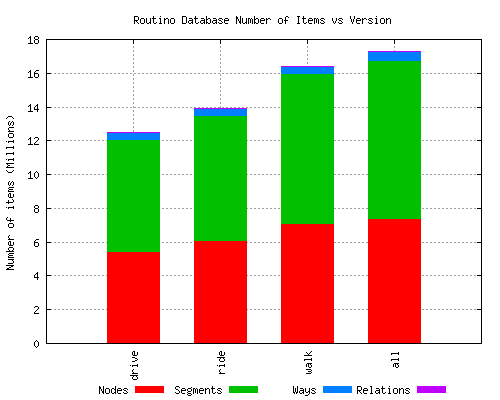
| Version | Nodes (MB) | Segments (MB) | Ways (MB) | Relations (MB) |
|---|---|---|---|---|
| drive | 62.549 | 125.992 | 11.236 | 0.032 |
| ride | 69.757 | 141.194 | 11.629 | 0.032 |
| walk | 81.609 | 169.215 | 11.520 | 0.000 |
| all | 85.200 | 178.455 | 12.570 | 0.033 |
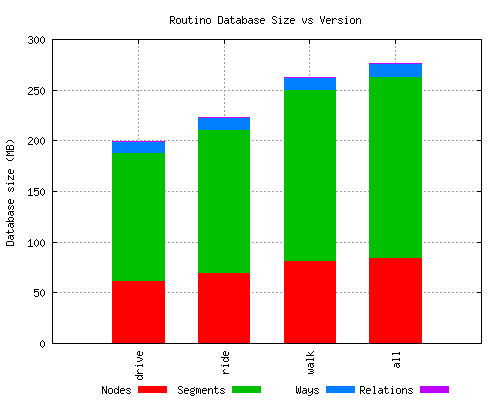
One obvious point about the results for the database size is that for walking there are no relations. This is because the relations are used for storing the turn restrictions which are not important when walking.
As with the time and memory the size of the database is smallest for driving (about 75% of the size of the complete database) and has proportionally fewer objects.
Routing
For routing the only fair comparison is for the driving database against the complete database because the normal test is performed for motorcar transport.Time and Memory
The results for time and memory are presented below as a table and a pair of graphs. The same set of 200 routes are tested for the two versions.
| Version | CPU Time (s) | Elapsed Time (s) | Max Resident Set Size (MB) | Number Routed |
|---|---|---|---|---|
| drive | 0.41 | 0.42 | 70 | 187 |
| ride | n/a | n/a | n/a | n/a |
| walk | n/a | n/a | n/a | n/a |
| all | 0.58 | 0.59 | 90 | 187 |
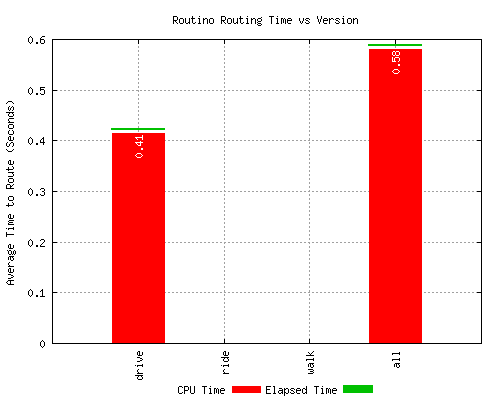
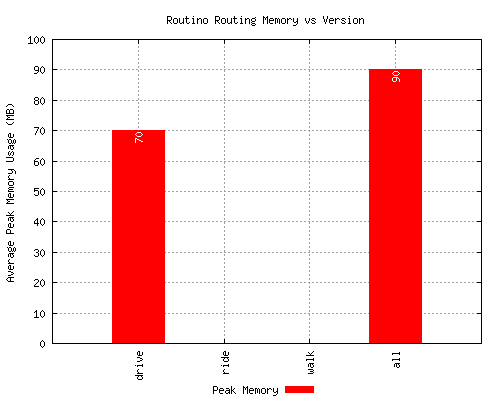
The time and memory taken for routing with the reduced database is reduced approximately in proportion to the size of the database (75%).